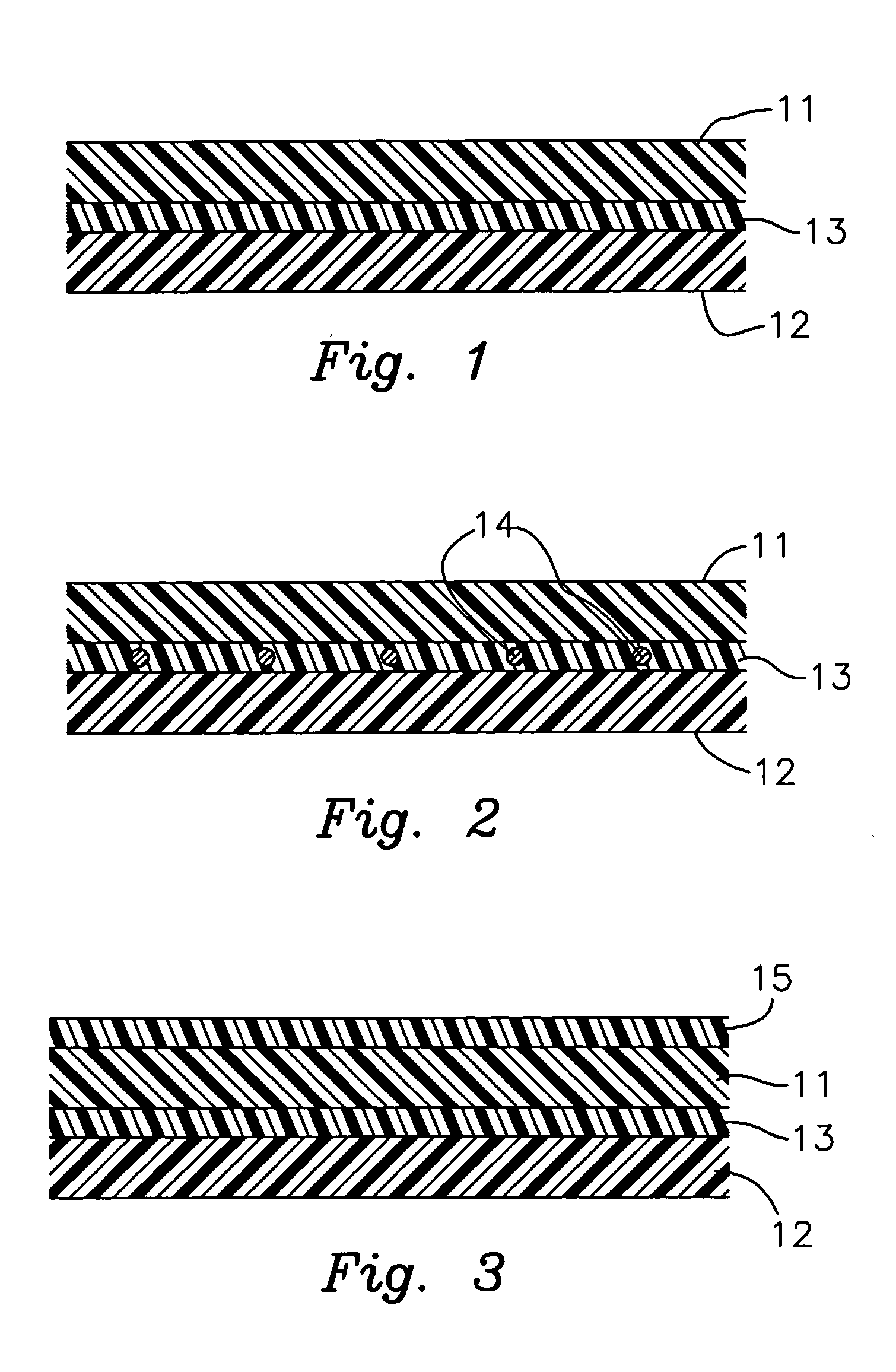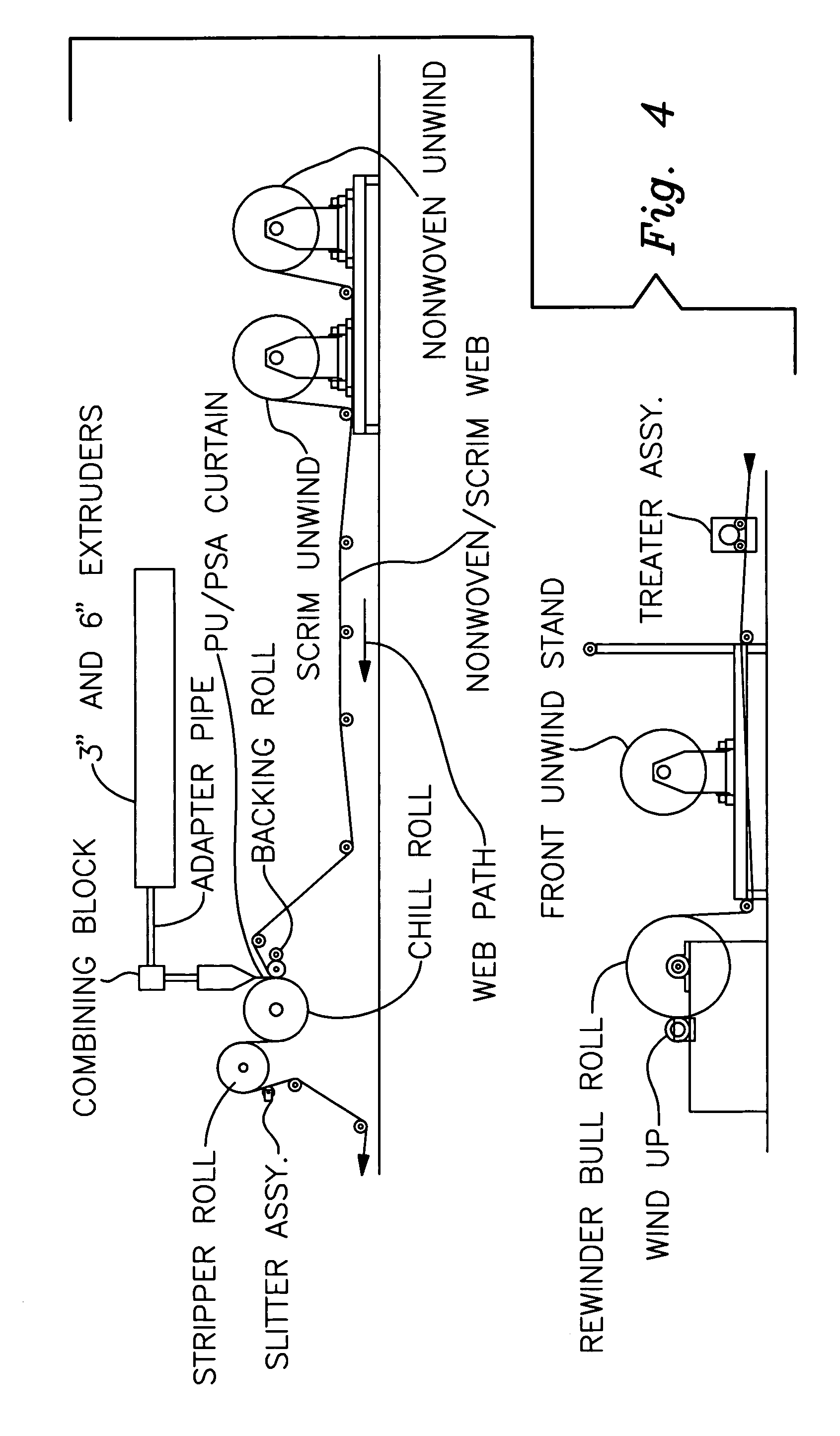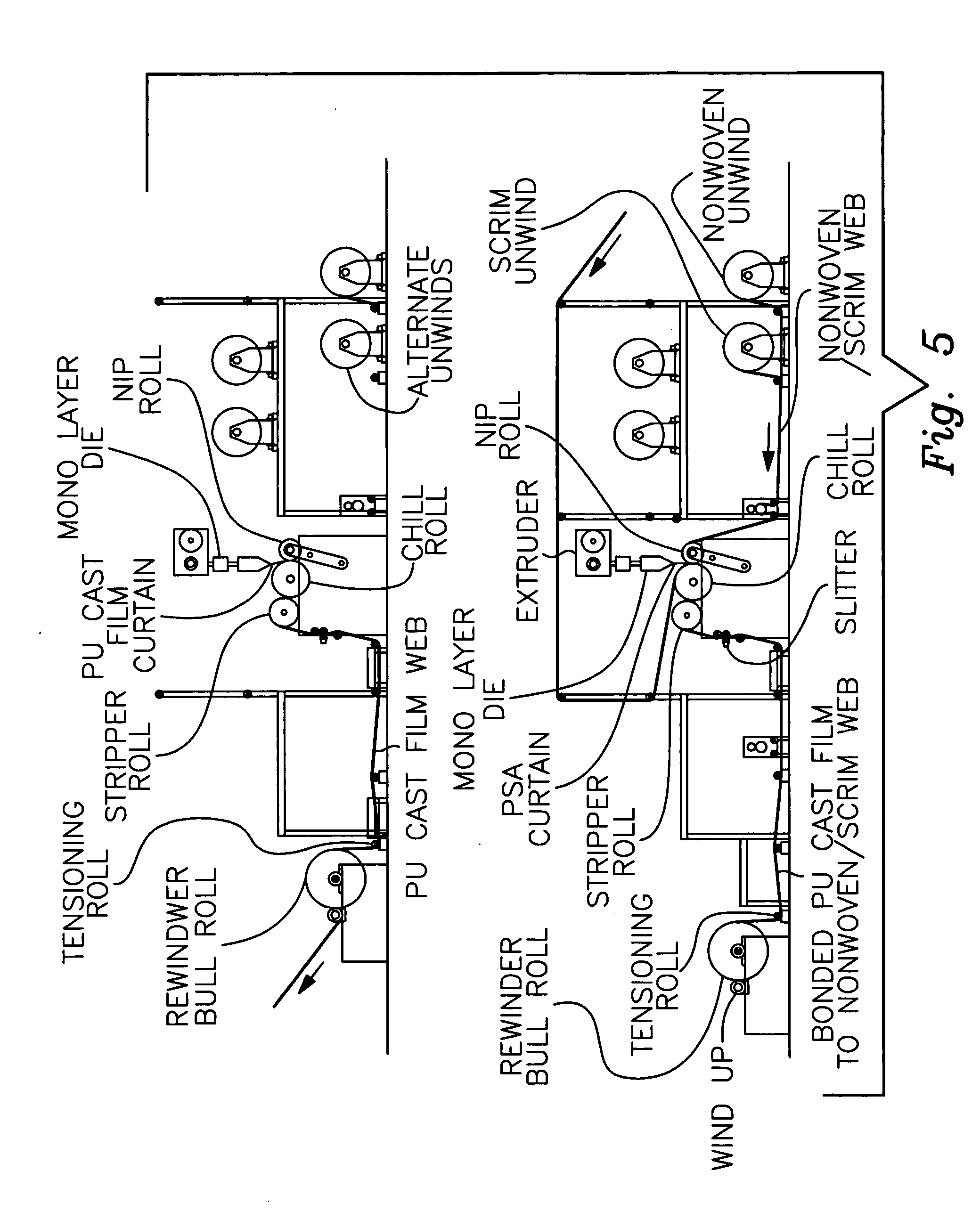Water vapor permeable, water impermeable barrier sheet member
- Summary
- Abstract
- Description
- Claims
- Application Information
AI Technical Summary
Benefits of technology
Problems solved by technology
Method used
Image
Examples
Embodiment Construction
[0018] With reference to the drawings, the invention will now be described in detail with regard for the best mode and the preferred embodiments.
[0019] Polypropylene is a very versatile and cost efficient polymer that is widely used in the production of both slit ribbon yarn woven fabric as well as spun bonded nonwoven fabrics for both construction application uses such as moisture barriers (i.e. housewrap), vapor barriers, concrete curing covers as well as numerous industrial packaging applications. Polypropylene has been found to be the polymer of choice for properties of stiffness, dimensional stability at high and low temperatures, tensile strength and impact resistance. In addition to construction and industrial applications, polypropylene nonwoven fabrics are widely used in consumer and medical complications such as diapers, dryer softener, wipes, surgical drapes and medical apparel. In many of these applications, breathability is an essential factor, which requires the lamin...
PUM
| Property | Measurement | Unit |
|---|---|---|
| Thickness | aaaaa | aaaaa |
| Thickness | aaaaa | aaaaa |
| Water vapor permeability | aaaaa | aaaaa |
Abstract
Description
Claims
Application Information
 Login to View More
Login to View More - R&D Engineer
- R&D Manager
- IP Professional
- Industry Leading Data Capabilities
- Powerful AI technology
- Patent DNA Extraction
Browse by: Latest US Patents, China's latest patents, Technical Efficacy Thesaurus, Application Domain, Technology Topic, Popular Technical Reports.
© 2024 PatSnap. All rights reserved.Legal|Privacy policy|Modern Slavery Act Transparency Statement|Sitemap|About US| Contact US: help@patsnap.com










